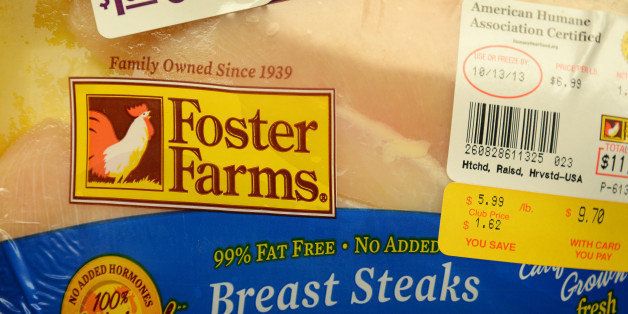
By Morgan Jones
A multi-state outbreak of Salmonella in raw chicken that started a year ago was recently declared over, but now authorities have reported that illnesses are continuing to be discovered.
The outbreak, tied to Foster Farms brand chicken, has caused cases of illness across the US, several of which have been discovered after authorities thought the outbreak was over.
The Centers for Disease Control and Prevention (CDC) stressed the importance of proper food safety practices when handling raw chicken.
More from RxWiki:
Unhealthy Effects of Seemingly Healthy Foods
How to Break Bad Eating Habits
Foods That Make You Go
According to CDC, the outbreak actually consists of seven different outbreak strains of Salmonella Heidelberg, all of which have been tied to Foster Farms brand chicken.
Salmonellosis, or infection with Salmonella, can cause symptoms like diarrhea, fever and abdominal cramps. In most cases, no treatment is needed, but in other cases, symptoms can be severe and require hospitalization.
The outbreaks seemed to have subsided in January, but in an update released March 3, CDC reported that additional cases likely to be tied to the outbreak were identified during February.
CDC initially reported on January 16 that the outbreak seemed to be over, but since that time, 51 new cases have been reported in five states.
As of February 28, CDC had identified 481 infections tied to the seven outbreak strains since the outbreak first began in March 2013.
Of these cases, 38 percent have resulted in hospitalization and no deaths have been reported. Cases have been discovered in 25 states and Puerto Rico, but most of the cases (76 percent) have occurred in California.
"The outbreak strains of Salmonella Heidelberg are resistant to several commonly prescribed antibiotics," explained CDC. "Although these antibiotics are not typically used to treat Salmonella bloodstream infections or other severe Salmonella infections, antibiotic resistance can increase the risk of hospitalization in infected individuals."
CDC noted that it is not rare for raw poultry from any producer to have Salmonella bacteria, but the presence of multidrug-resistant Salmonella bacteria is unusual.
To protect themselves, CDC suggested that consumers use proper food safety techniques when handling raw chicken, including washing hands, kitchen surfaces and utensils completely after contact with raw poultry.
CDC also stressed the need for raw chicken to be cooked thoroughly and completely, and suggested that raw meat be separated from other foods in the grocery cart and in the refrigerator.
Symptoms of salmonellosis typically develop 12 to 72 hours after the infection begins. People who think they might have eaten contaminated food and become ill should contact their doctor.